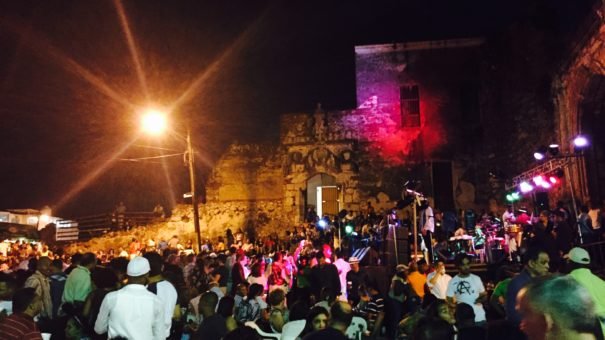
Mastering the Magic Words For Cheap Beer

Mastering the Magic Words For Cheap Beer
Presidente in the Dominican Republic
“Dame una fria.” Gimme a cold one.
“Uno cien, amigo.”
“Gracias.”
I smiled and put a 100-peso bill on the counter, grabbing the ice-crusted bottle of Presidente pilsner.
Much power is invested in that little phrase, dame una fria. A Dominican friend told me about its significance on my visit to Buena Vista, in the Central Range mountains.
“Only Americanos say una cerveza,” Emmanuel explained.
A medium-sized bottle of Presidente should cost 100 pesos (just over US$2), as advertised on every bottle cap, but at most shops I was paying anything from 110 to 140 pesos. Emmanuel told me that if you look like an Americano, and sound like an Americano, then you can afford Americano pricing, and the clerk will add whatever ‘tax’ on top of the 100 pesos that he thinks you’ll pay without causing a stink.
“You don’t look like an Americano,” Emmanuel said, shrugging, “so you might as well not sound like one.” It was a good piece of advice.
A month later in Santo Domingo, the capital, someone recommended that I check out the ruins of San Francisco monastery, specifically by night, on a Sunday. San Francisco is an impressive pile of red-brick rubble that makes up part of Santo Domingo’s World Heritage Site within the Zona Colonial historical district.
I had already explored the Zona by day, soaking up 500 years of colonial history, contentedly sipping frosty Presidentes from a paper bag. Languid groups of tourists snapped photos while locals wisely went about their business indoors, out of the sun
But following the recommendation, I experienced a different side of the Zona as I set out to find the ruins of San Francisco one Sunday night. Every corner was thronged with jubilant Dominicans, chatting in circles on plastic chairs or standing around food carts waiting for steaming empanadas. I could hear a live band over the happy cacophony of the crowd, the rumbling bass undoubtedly doing damage to centuries-old mortar. A few tourists drifted through the streets, but the celebration was clearly not some pony show staged for visitors.
The press of sweaty bodies got tighter and tighter as I approached the ruins.
People were accommodating, happy to move out of the way if possible, but by the time I reached the last block I could have easily crowd-surfed my way to the front.
Colorful spotlights lit a stage in front of the massive, half-crumbled nave of the monastery. A brassy, 12-piece salsa band was blasting a high-pace tune at the crowd, who sang along as they danced on a platform built over the ragged old cobbles of the street. Food vendors hawking homemade tostones wandered through the plaza, which was book-ended with bright green Presidente tents. I pushed my way into a tent.
“Dame una fria!”